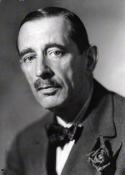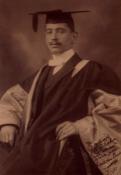
War Memorial
| Captain Malcolm BURR Chevalier Order of the White Eagle 5th Class, Orde | |
|
No 1 Civil Labour Battalion, Labour Corps Date of birth: 6th July 1878 Date of death: 13th July 1954 Died aged 76 Unknown |

|
| Malcolm Burr was born at at 2 Stainton Place, Greenwich in London on the 6th of July 1878 the son of Arthur Burr, an agent for the Edinburgh Life Office, and Fanny Burr later of Lower Putney Road, Riversdale in Wandsworth. He was educated at Hazelwood School until July 1892. He went on to Radley College where he was in Mr Titherington’s House from September 1892 to April 1897. He was a member of the Cricket XI in 1896. He went on to New College Oxford in 1897 where he achieved a MA. From 1903 to 1906 he attended the Royal School of Mines in London where he became an Associate of the Royal School of Mines in 1906 and, on leaving, he travelled extensively in the Balkans. In 1908 he became geological adviser to Kent Coal Concessions Ltd and took an active part in the development of the Kent coalfields. He became a director of the company along with his father and resigned that position on the 23rd of July 1914. He was married to Clara Millicent (nee Goode) in 1903; they had four daughters, Gabrielle Ruth Millicent, born on the 6th of July 1905 Rowena Frances, born on the 13th of August 1906, Yolanda Elizabeth, born in 1908, and one other and lived at “The Hermitage”, Dorney in Windsor. In 1903 he was first elected to the Royal Entomology Society and served as their Vice President in 1912. He was a co founder and Honorary General Secretary of the International Congress of Entomology from 1910 to 1920 and was elected as a member of the Orthopterist’s Society on the 7th of February 1911. In 1915 he joined the army and was commissioned as a temporary Captain on the Special List as an Assistant Landing Officer on the 10th of November 1915. On the 22nd of November 1915 he was given command of a Labour Battalion and served in Macedonia organising labour units in the rear areas until 1919. He was awarded the Chevalier Order of the White Eagle on the 10th of September 1918 and the Order of the Redeemer (Greece) 5th Class on the 9th of November 1918. After the war he travelled to the Lena goldfields, after which he wrote an account of his travels under the title of “In Bolshevik Siberia. The Land of Ice and Exile” which was published by H. F. & G. Witherby of London in 1931. Shortly afterwards he toured Angola in search of coal and published his account of that journey under the title “A Fossiker in Africa” in 1933. In 1935 he published “Slouch Hat” a memoir of his time on the Balkans. He was also the author of “Fauna and Flora of Radley” and numerous other entomological and geological works including acting as the translator of “Dersu the Trapper” from the original Russian. He travelled extensively in Africa collecting insect specimens and also published “The Insect Legion” in 1939. He returned to Yugoslavia in 1939, at the beginning of the Second World War, but was expelled from the country by the Yugoslav Government in the summer of 1940, under pressure from the Germans who had charged him with being implicated in sabotage against the German railways. Although this was strenuously denied by the British Government the Yugoslavs expelled him anyway. As a result, he returned to England where he served with the Ministry of Information and was placed in charge of the Balkan Press Reading Bureau in Turkey from April 1942 to late 1943. This unit monitored the medium wave broadcasts from Balkan radio stations which were inaudible in London and Cairo. He worked for the ministry until 1945. After the war he returned to Istanbul where he was appointed as Professor of English at the Istanbul School of Economics. After the war he moved to Istanbul where he was Professor of English at the Istanbul School of Economics. He wrote the books “In Bolshevik Siberia: The Land of Ice and Exile” published by H.F. & G. Witherby in 1931 and “A Fossicker in Angola” published by Figurehead in 1933, as well as contributing articles to “A Tourist’s Guide to Istanbul”. A collection of his drawings and manuscripts is held at the Natural History Museum and at Oxford University. He died at Istanbul as the result of an accident. |
|
 | |
| Went on to Radley College |
Back